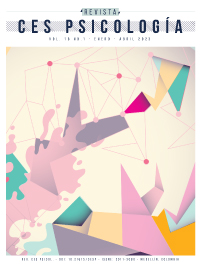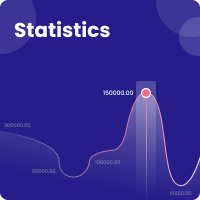I’s a match! Attitude scale towards Tinder: validity and reliability
DOI:
https://doi.org/10.21615/cesp.6448Keywords:
Scale of Attitudes towards or Tinder (EAFT), Tinder, atitudes, validation, dating application, social network sites, networking appAbstract
Dating applications are used as a means to facilitate interaction between people who want to meet and establish romantic and sexual encounters. In this study, we aim to develop and validate a new scale to measure attitudes towards Tinder (EAFT). For this, two studies were carried out. In Study 1 (N= 260), we verified the factor structure of the scale and the distribution of items using the Item Response Theory (TRI). The results revealed a brief and precise scale (Cronbach of 0.95), demonstrating that the items saturate a single factor, contributing significantly to the formation of the latent trait. In Study 2 (N=265), we attempted to confirm the one-dimensional structure of the measure using Confirmatory Factor Analysis. The results showed good fit rates to the model (χ²/df =1.46); CFI = 1,000; TLI = 1,002; RMSEA = 0.000 (0.00 - 0.11); confirming the unifactorial structure found in Study 1. In summary, the results of the two studies indicate that the EAFT shows consistent psychometric parameters, which makes it suitable and reliable for measuring attitudes towards Tinder.
Downloads
References
Alexopoulos, C., Timmermans, E., & McNallie, J. (2020). Swiping more, committing less: Unraveling the links among dating app use, dating app success, and intention to commit infidelity. Computers in Human Behavior, 102, 172–180. https://doi.org/10.1016/j.chb.2019.08.009
Allport, G. W. (1966). Attitudes in the history of social psychology. In: Warren, N., & Jahoda, M. (Eds.). Attitudes. (p. 15-21). London: Penguin Books.
Anzani, A., Di Sarno, M., & Prunas, A. (2018). Using smartphone apps to find sexual partners: A review of the literature. Sexologies, 27(3), e61–e65. https://doi.org/10.1016/j.sexol.2018.05.001
Baker, F. B. (2001). The basics of item response theory. College Park, MD: ERIC Clearinghouse on Assessment and Evaluation. Original work published in 1985. https://www.ime.unicamp.br/~cnaber/Baker_Book.pdf
Bargh, J. A., & McKenna, K. Y. A. (2004). The internet and social life. Annual Review of Psychology, 55(1), 573–590. https://doi.org/10.1146/annurev.psych.55.090902.141922
Byrne, B. M. (2010). Structural equation modeling with amos: Basic concepts, applications, and programming. New York: Routledge.
Boyd, D. M., & Ellison, N. B. (2007). Social network sites: Definition, history, and scholarship. Journal of Computer-Mediated Communication, 13(1), 210–230. https://doi.org/10.1111/j.1083-6101.2007.00393.x
Boateng, G. O., Neilands, T. B., & Frongillo, E. A. (2018). Best practices for developing and validating scales for health, social, and behavioral research: a primer. Frontiers In Public Health, 6(149), 1–18. https://doi.org/10.3389/fpubh.2018.00149
Crites, S. L., Fabrigar, L. R., & Petty, R. E. (1994). Measuring the affective and cognitive properties of attitudes: Conceptual and methodological issues. Personality and Social Psychology Bulletin, 20(6), 619-34.
DeVellis, R. F. (2017). Scale development: theory and applications (4th ed.). Thousand Oaks, CA: Sage.
Fleck, C. (2015). Attitude: history of concept. International Encyclopedia of theSocial & Behavioral Sciences, 175–177. https://doi.org/10.1016/B978-0-08-097086-8.03146-9
Fornell, C., & Larcker, D. F. (1981). Evaluating structural equations models with unobservable variables and measurement error. Journal of Marketing, 18(1), 39-50. http://dx.doi.org/10.2307/3151312
Hahn, H. A., You, D. S., Sferra, M., Hubbard, M., Thamotharan, S., & Fields, S. A. (2018). Is it too soon to meet? Examining differences in geosocial networking app use and sexual risk behavior of emerging adults. Sexuality and Culture, 22(1), 1–21. https://doi.org/10.1007/s12119-017-9449-3
Horn, J. L. (1965), “A Rationale and test for the number of factors in factor analysis,” Psychometrika, 30, 179-85.
Happn. (2020). Happn. https://www.happn.com/en/about/
International Association of Applied Psychology [IAAP] and the International Union of Psychological Science [IUPsyS]. (2008). Universal declaration of ethical principles for psychologists. https://www.iupsys.net/about/declarations/universal-declaration-of-ethical-principles-for-psychologists/
Lorenzo-Seva, U., & Ferrando, P.J. (2013). FACTOR 9.2 A comprehensive program for fitting exploratory and semiconfirmatory factor analysis and IRT models. Applied Psychological Measurement, 37(6), 497-498. https://doi.org/10.1177/0146621613487794
Lord, F. M. (1980). Applications of item response theory to practical testing problems. Hillsdale, NJ: Lawrnce Erlbaum Associates.
March, E., Grieve, R., Marrington, J., & Jonason, P. K. (2017). Trolling on tinder® (and other dating apps): examining the role of the dark tetrad and impulsivity. Personality and Individual Differences, 110, 139–143. https://doi.org/10.1016/j.paid.2017.01.025
Merrill, R. A., & Liang, X. (2019). Associations between adolescent media use, mental health, and risky sexual behaviors. Children and Youth Services Review, 103, 1–9. https://doi.org/10.1016/j.childyouth.2019.05.022
McDonald, R. P. (1999). Test theory: A unified treatment. Mahwah, N.J.: L. Erlbaum Associates.
Morizot, J., Ainsworth, A. T., & Reise, S. P. (2007). Toward modern psychometrics: Application of item response theory models in personality research. In R. W. Robins, R. C. Fraley, & R. F. Krueger (Eds.), Handbook of Research Methods in Personality Psychology (pp. 407-423). New York: Guilford.
Muthén, L. K., & Muthén, B. O. (2010). Mplus: statistical analysis with latent variables. User’s guide (1998-2010). Los Angeles: Muthén & Muthén.
Oskamp, S., & Schultz, W. P. (2005). Attitudes and opinions. London: Laurence Erlbaum Associates, Publishers.
Neiva, E. R., & Torres, C. V. (2011). Psicologia social no Brasil: uma introdução. In C. V. Torres & E. R. Neiva (Eds.), Psicologia social: principais temas e vertentes (pp. 31-57). São Paulo: Artmed.
Orosz, G., Tóth-Király, I., Bothe, B., & Melher, D. (2016). Too many swipes for today: The development of the problematic tinder use scale (PTUS). Journal of Behavioral Addictions, 5(3), 518–523. https://doi.org/10.1556/2006.5.2016.016
Pimentel, C. E., Vilar, R., Cavalcanti, J. G., & Moura, G. B. de. (2016). Psicologia da era virtual: estrutura das atitudes frente ao Facebook. Pesquisas e Práticas Psicossociais, 11(2), 310–324.
Radovic, A., Gmelin, T., Stein, B. D., & Miller, E. (2017). Depressed adolescents’ positive and negative use of social media. Journal of Adolescence, 55, 5–15. https://doi.org/10.1016/j.adolescence.2016.12.002
Rodríguez-Castro, Y., Alonso-Ruido, P., González-Fernández, A., Lameiras-Fernández, M., & Carrera-Fernández, M. V. (2017). Spanish adolescents’ attitudes towards sexting: Validation of a scale. Computers in Human Behavior, 73, 375–384. https://doi.org/10.1016/j.chb.2017.03.049
Samejima, F. (1969). Estimation of latent ability using a response pattern of graded scores. Psychometric Monograph, 17. https://doi.org/10.1007/bf02290599
Sevi, B., Aral, T., & Eskenazi, T. (2018). Exploring the hook-up app: Low sexual disgust and high sociosexuality predict motivation to use Tinder for casual sex. Personality and Individual Differences, 133, 17–20. https://doi.org/10.1016/j.paid.2017.04.053
Ferreira, D. C. S., Pimentel, C. E., Cirino, C. S., Santos, H. S., & Oliveira, M. C. (2008). Psicologia da era virtual: atitudes de estudantes adolescentes frente ao Orkut. Psicologia Argumento, 26(55), 305-317. https://doi.org/10.7213/rpa.v26i55.19859
Sumter, S. R., Vandenbosch, L., & Ligtenberg, L. (2017). Love me tinder: Untangling emerging adults’ motivations for using the dating application Tinder. Telematics and Informatics, 34(1), 67–78. https://doi.org/10.1016/j.tele.2016.04.009
Tinsley, H. E. A., & Tinsley, D. J. (1987). Uses of factor analysis in counseling psychology research. Journal of Counseling Psychology, 34(4), 414–424. https://doi.org/10.1037/0022-0167.34.4.414
Van De Wiele, C., & Tong, S. T. (2014). Breaking boundaries: The uses & gratifications of Grindr. UbiComp 2014 - Proceedings of the 2014 ACM International Joint Conference on Pervasive and Ubiquitous Computing, 619–630. https://doi.org/10.1145/2632048.2636070
Downloads
Published
How to Cite
Issue
Section
License
Copyright (c) 2023 Suiane tavares, Tamyres Tomaz Paiva, Cícero Roberto Pereira, Carlos Eduardo Pimentel, Luíza Armanda Pinto dos Santos

This work is licensed under a Creative Commons Attribution-NonCommercial-ShareAlike 4.0 International License.
Each manuscript is accompanied by a statement specifyingThat the materials are unpublished, that have not been previously published in printed formatElectronic and that they will not be presented to any other means before knowing the decision of the magazine. ThroughoutIn case, any previous publication, sea in printed or electronic form, must be made known to the editorial staffWriting The authors attach a signed statement stating that, and the manuscript is acceptedFor publication, the rights of reproduction are the exclusive property of the Journal CES Psychology.


